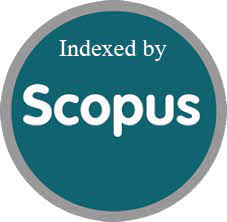Using data mining techniques to identify factors associated with medication non-adherence
DOI:
https://doi.org/10.52783/jns.v14.1569Keywords:
Internet of things (IoT), privacy and security, encryption algorithm, pattern-based attack on the bf-encoded dataAbstract
Techniques for data mining and machine learning have recently become widely used in the healthcare industry. The goal of this research is to create an automated method of disease diagnosis. Here, three distinct methods for disease diagnosis utilizing data mining techniques are proposed: the hybrid fuzzy decision making tree approach, the association rule-based approach, and the efficient hybrid approach. The first strategy suggests an effective hybrid technique to lower the number of outliers. In data mining, outlier detection is a current study topic. The items that reside outside of the clusters are highlighted and identified as outliers if clustering techniques are applied. However, a small number of unidentified pieces might be added to the cluster. Therefore, it becomes vital to identify and remove such data that has been merged with the clusters in order to fully remove the unnecessary data from the dataset. The suggested method uses two datamining methods, Multilayer Neural Networks (MLN) and density-based K-means, to find outliers in a data set. When evaluated on the UCI repository, the suggested system outperforms the current ones in terms of disease prediction. The classification accuracy has increased while the time complexity has decreased.
Downloads
Metrics
References
Nabi SA, Kalpana P, Chandra NS, Smitha L, Naresh K, Ezugwu AE, Abualigah L. Distributed private preserving learning based chaotic encryption framework for cognitive healthcare IoT systems. Informatics in Medicine Unlocked. 2024 Jan 1;49:101547. https://doi.org/10.1016/j.imu.2024.101547
Xie Q, Jiang S, Jiang L, Huang Y, Zhao Z, Khan S, Dai W, Liu Z, Wu K. Efficiency optimization techniques in privacy-preserving federated learning with homomorphic encryption: A brief survey. IEEE Internet of Things Journal. 2024 Jul 8;11(14):24569-80. https://doi.org/10.1109/JIOT.2024.3382875
Aswathy RH, Srithar S, Dayana KR, Suresh P. MIAS: an IoT based multiphase identity authentication server for enabling secure communication. Journal of Internet Services and Information Security (JISIS). 2023;13(4):114-26. https://doi.org/10.58346/JISIS.2023.I4.008
Su J, Bangalore L, Berger H, Yi J, Castor A, Sherr M, Venkitasubramaniam M. SCIF: Privacy-Preserving Statistics Collection with Input Validation and Full Security. Cryptology ePrint Archive. 2024.
Kofod-Petersen A, Cassens J. Proxies for privacy in ambient systems.
Nabi SA, Kalpana P, Chandra NS, Smitha L, Naresh K, Ezugwu AE, Abualigah L. Distributed private preserving learning based chaotic encryption framework for cognitive healthcare IoT systems. Informatics in Medicine Unlocked. 2024 Jan 1;49:101547. https://doi.org/10.1016/j.imu.2024.101547
Gandomkar H, Nazari S, Hosseini P, Abdolhay HA. Genome-wide assessment and characterization of simple sequence repeats (SSRs) makers for Capoeta aculeata (Valenciennes, 1844) using NGS data. International Journal of Environmental Research and Education. 2022 May 10;2(2):16-28. https://doi.org/10.70102/IJARES/V2I2/4
Kumar R, Kumar P, Jolfaei A, Islam AN. An integrated framework for enhancing security and privacy in iot-based business intelligence applications. In2023 IEEE International Conference on Consumer Electronics (ICCE) 2023 Jan 6 (pp. 01-06). IEEE. https://doi.org/10.1109/ICCE56470.2023.10043450
Aravindhan S. A Flexible Structure's Active Vibration Suppression Using Smart Materials. Association Journal of Interdisciplinary Technics in Engineering Mechanics. 2023 Oct 9;1(1):55-61.
Alkaim AF, Khan M. Pharmacist-Led Medication Therapy Management: A Review of Its Effectiveness in Improving Patient Outcomes. Clinical Journal for Medicine, Health and Pharmacy. 2024 Dec 20;2(4):31-9.
Shahabadkar R, Govinda S, Firdose S. Integrated privacy preservation with novel encoding and encryption for securing video in internet-of-things. InComputer Science On-line Conference 2023 Apr 3 (pp. 217-227). Cham: Springer International Publishing. https://doi.org/10.1007/978-3-031-35317-8_19
Donkor K, Zhao Z. The impact of digital transformation on business models: a study of industry disruption. Glob Perspect Manag. 2024;2(3):1-12.
Lee S, Lee G, Kim JW, Shin J, Lee MK. HETAL: efficient privacy-preserving transfer learning with homomorphic encryption. InInternational Conference on Machine Learning 2023 Jul 3 (pp. 19010-19035). PMLR.
Ghalami A, Naderi H. A new approach to trajectory data clustering. Int Acad J Sci Eng. 2016;3(1):41-52.
Alshammari A, El Hindi K. Privacy-Preserving Deep Learning Framework Based on Restricted Boltzmann Machines and Instance Reduction Algorithms. Applied Sciences. 2024 Feb 1;14(3):1224. https://doi.org/10.3390/app14031224
He D, Kumar N, Khan MK, Wang L, Shen J. Efficient privacy-aware authentication scheme for mobile cloud computing services. IEEE Systems Journal. 2016 Dec 28;12(2):1621-31. https://doi.org/10.9756/IAJIR/V10I1/IAJIR1001
Kumar C, Chittora P. Secure and Privacy-Preserving Framework for IoT-Enabled Smart Grid Environment. Arabian Journal for Science and Engineering. 2024 Mar;49(3):3063-78. https://doi.org/10.1007/s13369-023-07900-y
Downloads
Published
How to Cite
Issue
Section
License

This work is licensed under a Creative Commons Attribution 4.0 International License.
You are free to:
- Share — copy and redistribute the material in any medium or format
- Adapt — remix, transform, and build upon the material for any purpose, even commercially.
Terms:
- Attribution — You must give appropriate credit, provide a link to the license, and indicate if changes were made. You may do so in any reasonable manner, but not in any way that suggests the licensor endorses you or your use.
- No additional restrictions — You may not apply legal terms or technological measures that legally restrict others from doing anything the license permits.










